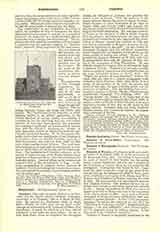

Dominic of Prussia, a Carthusian monk and ascetical writer, b. in Poland, 1382; d. at the monastery of St. Alban near Trier, 1461. According to the account he wrote of himself his first teacher was the parish priest, a pious Dominican; later he was a student at the University of Cracow where he was noted for his intelligence. Falling into bad habits he led a vagabond life until twenty-five years of age, when he reformed through the influence of Adolf of Essen, prior of the Carthusian monastery of St. Alban, near Trier. Dominic now became a Carthusian, entering the order in 1409. His monastic life was one of severe penance and religious fervor. The spiritual favors he received were numerous, and many visions are ascribed to him. Among the positions he filled were those of master of novices at Mainz and vicar of the monastery of St. Alban, where he died. As an author Dominic composed seventeen treatises, which have been preserved in various libraries. In the “Libri duo experientiarum” he relates the events of his own life; the “Tractatus de Contemptu mundi”, “Remedium tentationum”, “De vera obedientia”, and “Sonus epulantis” he prepared during his solitary repasts. A further work is his “Letters of Direction”.
Dominic of Prussia is frequently mentioned in the discussions as to the origin of the Rosary, and what has been improperly called “the Carthusian Rosary” is ascribed to him. To the one hundred and fifty Ave Marias which in those days formed the “Psalter of Mary” he had the thought of adding meditations on the life of Christ and of His Holy Mother. As in his time the Ave Maria terminated with the words: “Fructus ventris tui, Jesus”, he joined to each a sentence to recall to mind the mystery, such as “quem Angelo nuntiante de Sancto Spiritu concepisti”, “quo concepto, in montana ad Elizabeth ivisti”, etc. Both Dominic and his friend Adolf sought to spread the use of this form of prayer in the Carthusian Order and among the laity. For these reasons it is held by some authors that the “Psalter” of Dominic was the form, or one of the original forms, from which the present Rosary developed.
AMBROSE MOUGEL

